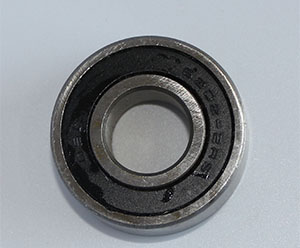
What do bearing numbers mean
About us:
As a professional factory that produces professional products, with professional people doing professional things, our foreign customers have declared: “NSAR bearings have reached a domestic first-class and international brand-name quality, and NSAR bearing prices are 30-50% lower than international similar bearings.”
NSAR, a professional 6200 deep groove ball bearings supplier in China, provides a broad variety of 6200 deep groove ball bearing with best customer service and quality assured. With more than 20 years deep groove ball bearings manufacture experience,you can products download, our deep groove ball bearing has been exported to United States, Canada, Mexico, Brazil, Argentina. NSAR can satisfy your bulk deep groove ball bearing customization needs,We provide 6012 bearing and 6000 bearings series and 6301 bearings and pillow block ball bearings and 6300 bearing.
Bearing numbers typically consist of alphanumeric characters that convey specific information about the bearing’s dimensions, load-carrying capacity, tolerance levels, and other characteristics. The structure of bearing numbers can vary depending on the bearing type and standards used by manufacturers. However, common elements found in bearing numbers include:
1. Series Designations: Certain numbers or letters may represent series designations that classify bearings based on their size, load-carrying capacity, or other characteristics. For example:
– “6000 series” may refer to standard deep groove ball bearings with specific dimensions and load ratings.
– “30 series” might denote specific sizes of tapered roller bearings.
2. Prefixes: Prefixes in bearing numbers often indicate the type or design of the bearing. For example:
– “6” typically denotes a deep groove ball bearing.
– “NU” indicates a cylindrical roller bearing.
– “T” signifies a tapered roller bearing.
3. Basic Bearing Dimensions: Following the prefix, numbers in the bearing code represent basic dimensions such as bore diameter, outer diameter, and width. These dimensions are usually given in millimeters or inches, depending on the bearing standard.
4. Internal Design: Some bearing numbers may include internal designations that specify features such as contact angle, precision class, or special variants. These internal designations help in identifying specific variants within a bearing series.
5. Suffixes: Suffixes in bearing numbers provide additional information about features such as sealing, lubrication, clearance, or cage design. Examples include:
– “RS” or “2RS” indicating rubber seals on deep groove ball bearings.
– “C3” denoting a greater than normal radial internal clearance.
– “J” representing a pressed steel cage in some designs.
6. Accuracy and Tolerance Levels: Bearing numbers often incorporate symbols or codes representing the bearing’s precision class and tolerance levels. These codes indicate the degree of precision in manufacturing and assembly, influencing factors such as rotational accuracy, vibration levels, and operating temperature ranges.
7. Load Ratings: Bearing numbers may also include load ratings, which indicate the maximum loads that the bearing can withstand without experiencing excessive wear or failure. Load ratings are typically expressed in terms of dynamic load rating (C) and static load rating (Co), providing valuable information about the bearing’s capacity to support radial, axial, or combined loads.
8. Assembly and Mounting Instructions: Some bearing numbers may incorporate assembly or mounting instructions, providing guidance on proper installation techniques, bearing clearance adjustment, or recommended lubrication practices. Following these instructions is essential for maximizing bearing performance and longevity.
9. Special Features and Variants: In certain cases, bearing numbers may denote special features or variants designed for specific applications or operating conditions. Examples include high-temperature bearings, corrosion-resistant coatings, or bearings with enhanced sealing for contaminated environments.
10. Interchangeability: Bearing numbers may include information that facilitates interchangeability between different brands or standards. Cross-referencing charts or databases are available to help users identify equivalent bearings from various manufacturers, ensuring compatibility and ease of replacement.
By understanding the information conveyed by bearing numbers, engineers, technicians, and end-users can make informed decisions regarding bearing selection, installation, and maintenance. Manufacturers often provide detailed documentation and technical support to assist users in interpreting bearing numbers and optimizing bearing performance for their specific applications.

